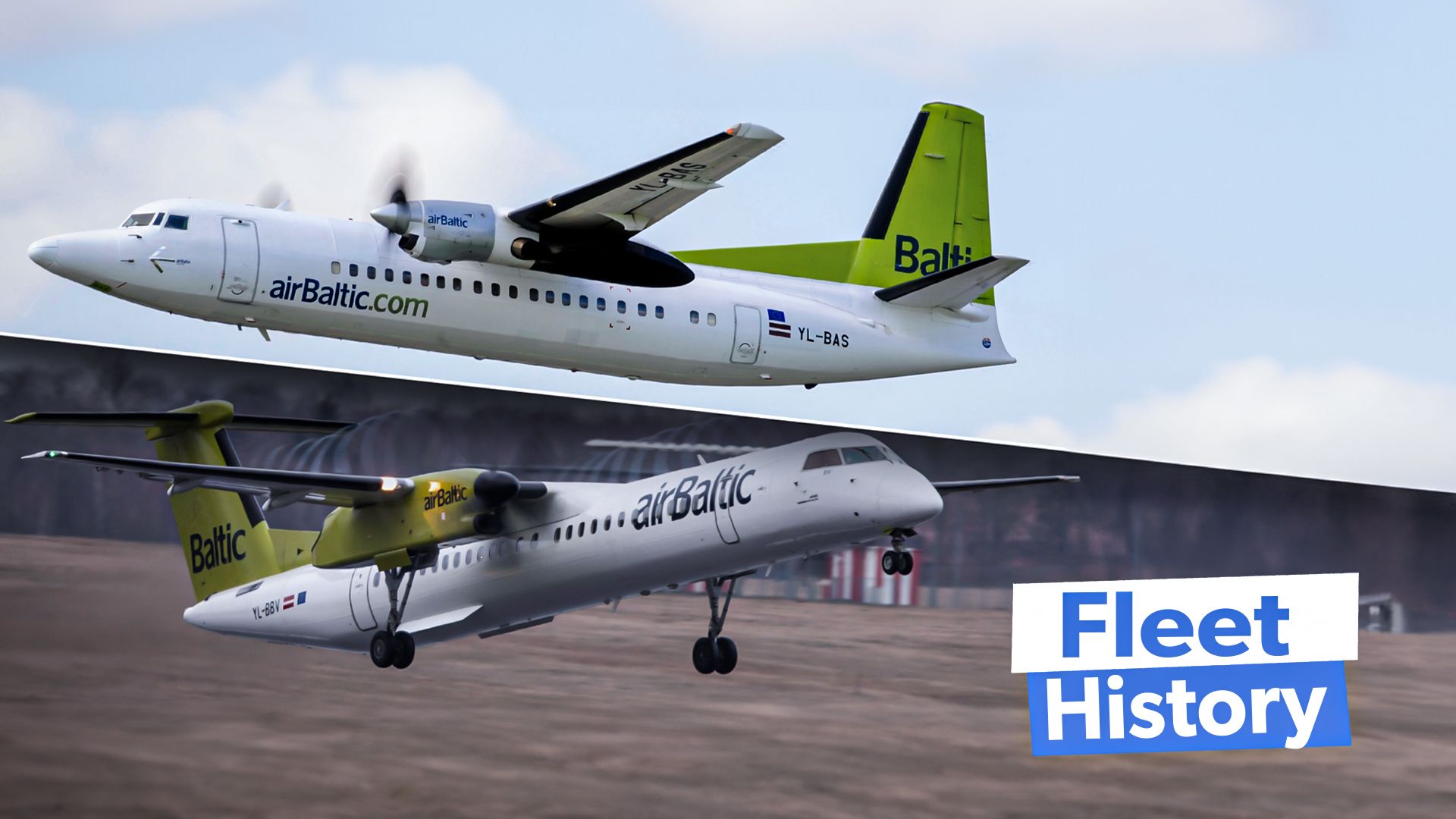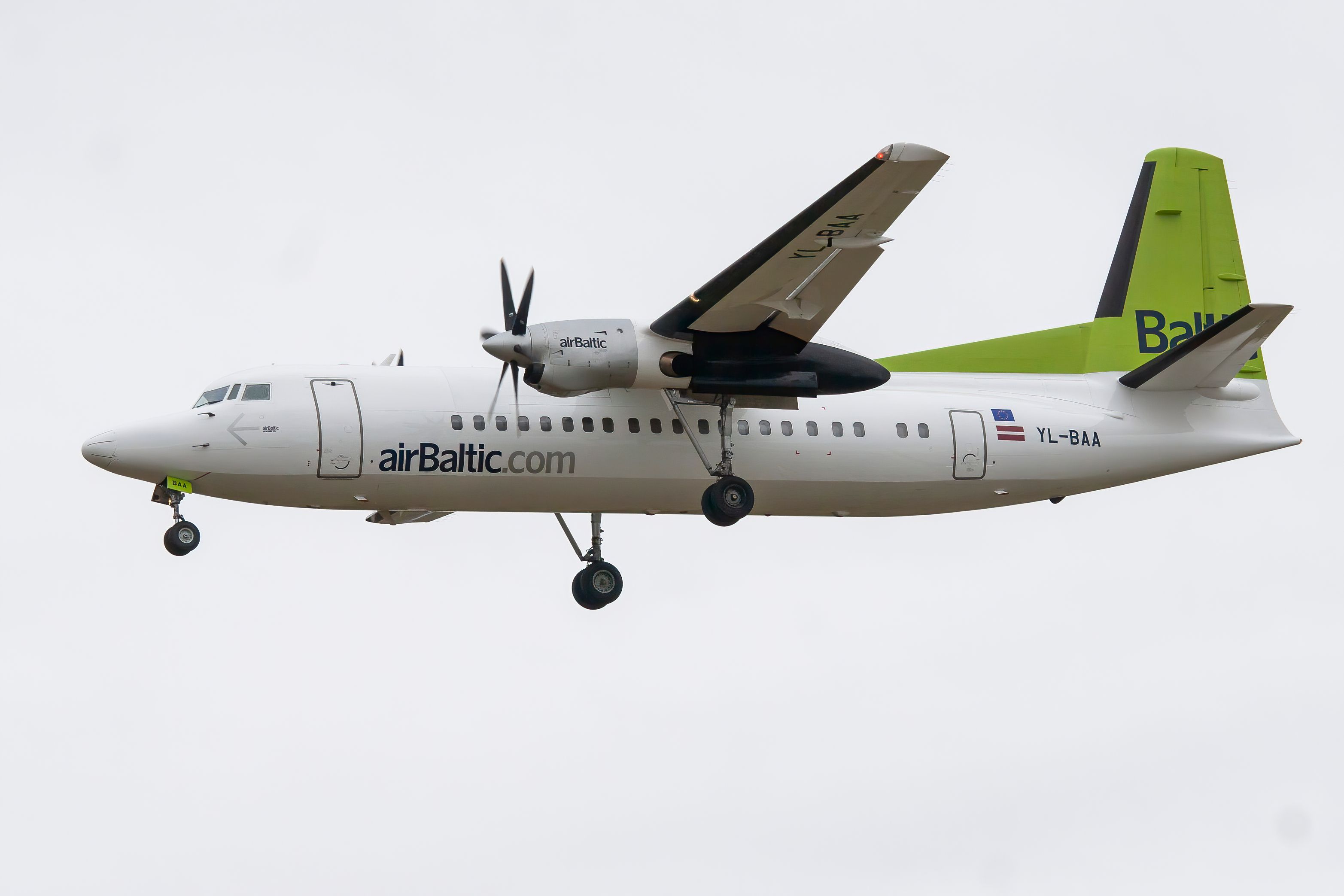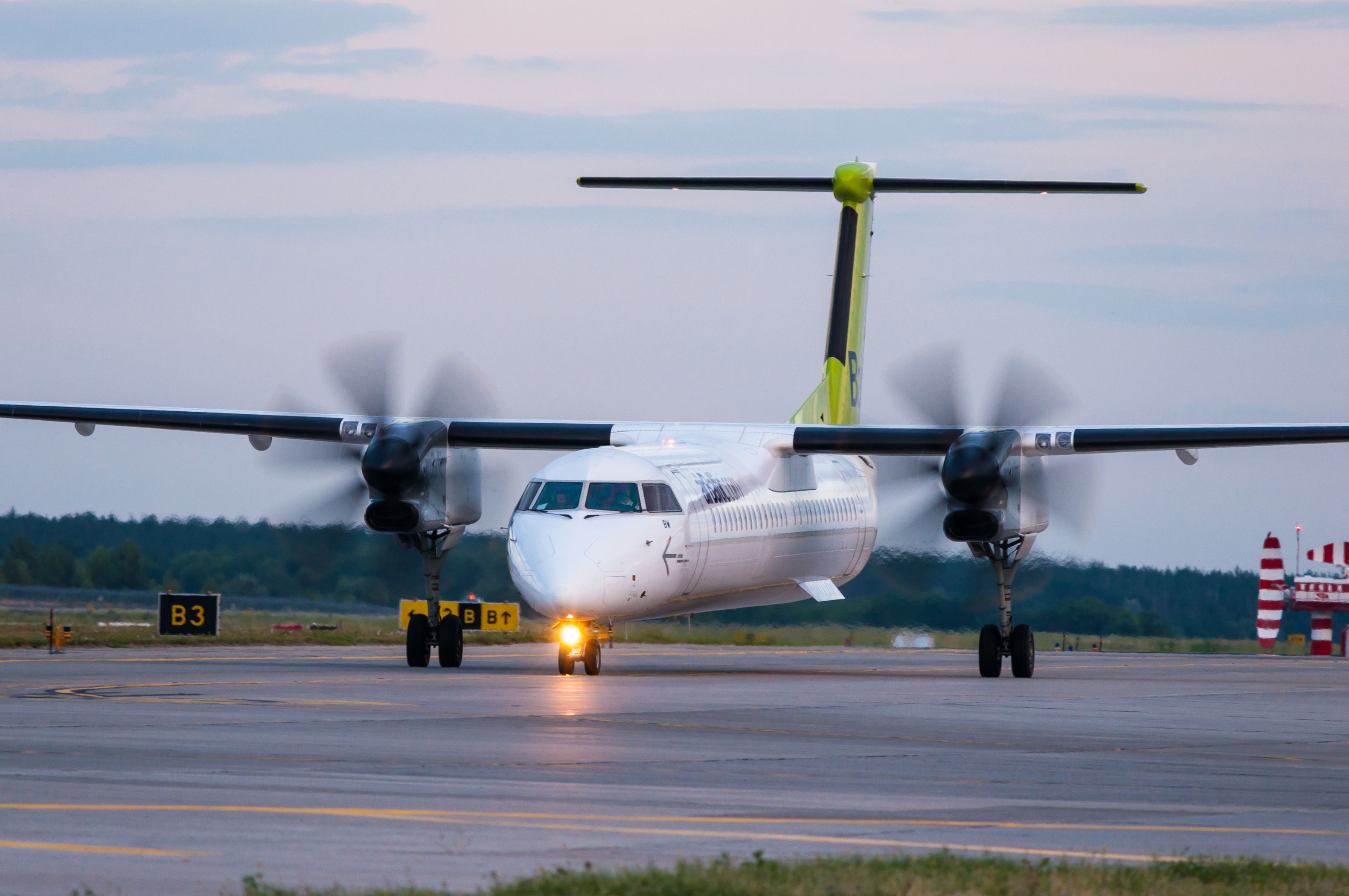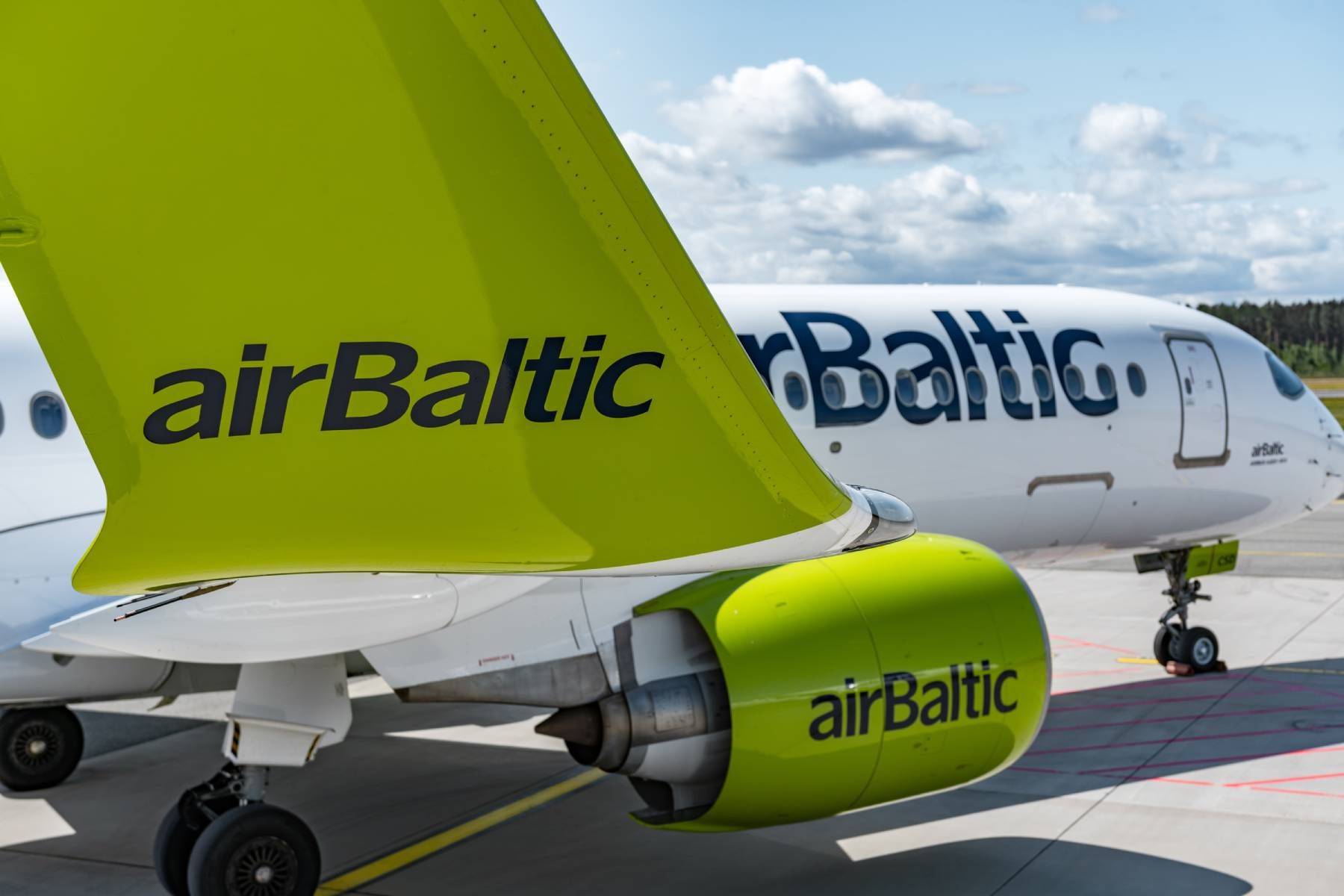Summary
- airBaltic operated Fokker 50s and Dash 8s before transitioning to an all-Airbus A220 fleet.
- Top route for Fokker 50s was Riga-Vilnius, while Dash 8s flew many flights to Riga, Helsinki, Tallinn, and other destinations.
- A single Saab 340 was part of airBaltic’s earlier fleet, serving under various owners and now flies cargo for Airest.
Latvian flag carrier airBaltic is known today for having a very young all-jet fleet, which consists almost entirely of Airbus A220-300 narrowbodies. In terms of twinjets, it also most recently operated designs from the Boeing 737 family, retiring its final examples at the end of 2020. However, the airline also has an interesting history when it comes to its former turboprop fleet, which we shall now examine.
10 Fokker 50s
The Fokker 50 was one of airBaltic’s two main turboprop families during the time that it operated such aircraft. According to historical fleet data made available by ch-aviation, the Latvian flag carrier flew 10 of these Dutch-built aircraft between 1998 and 2014, with these aircraft joining airBaltic between 1998 and 2009. airBaltic re-registered several examples, with their ‘YL’ prefixes changing to ‘LY’ and back.
Photo: Karolis Kavolelis | Shutterstock
Historical scheduling data made available by Cirium, an aviation analytics company, shows that airBaltic deployed its Fokker 50s on an interesting variety of regional corridors. Taking 2013 as an example, when it scheduled 3,791 Fokker 50 flights with 174,386 seats and 37,314,096 available seat miles (ASMs), the top route with the type was Riga-Vilnius, followed by Riga-Tallinn and Riga-Helsinki.
According to data from Planespotters.net, airBaltic fitted its Fokker 50 aircraft with an all-economy seating configuration with space for 46 passengers. It disposed of these planes over a two-year period in the early to mid-2010s. The first left in 2012, with the last departing in 2014. They went on to fly for carriers including Air Panama, Jetcom, and even Minoan Air, which briefly served London Oxford Airport.
The last to go: a dozen Dash 8s
airBaltic’s most numerous turboprop family back in the day was the De Havilland Canada DHC-8 series, otherwise known as the Dash 8, with the Latvian flag carrier operating 12 examples of the Q400 variant. It flew these 76-seaters for the duration of the 2010s, and, interestingly enough, they more or less replaced the Fokker 50 at airBaltic.Eightt brand-new Dash 8s joined the airline in 2010.
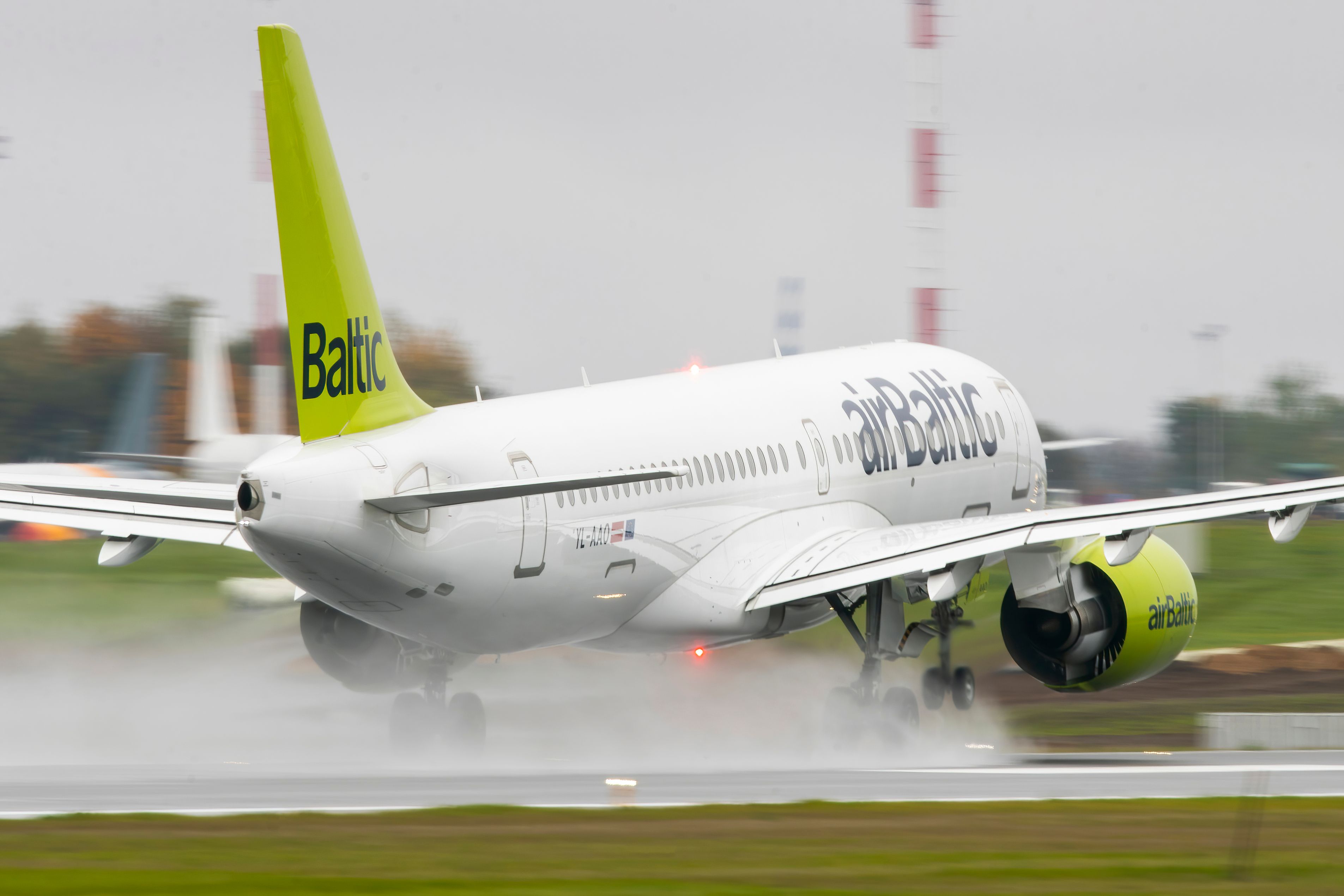
Related
Is airBaltic Coming To The US? What Network Chief Says About Its Plans
This is the latest information.
The final four then followed these aircraft in 2013. Despite arriving three years after the initial batch, data from ATDB.aero shows that these aircraft also came to the Latvian flag carrier on a brand-new basis. While the type generally proved to be a reliable workhorse for the airline, in February 2020, Simple Flying reported on an incident in which an airBaltic Dash 8 suffered a depressurization at 25,000 feet.
A month after this incident, the Dash 8’s story at airBaltic came to an end. The Latvian flag carrier withdrew all 12 aircraft between March 13th and 16th in 2020, amid the contextual backdrop of the onset of the coronavirus pandemic and increasing Airbus A220 deliveries. As the planes were just 10 years old or less at the time, most remain active today, with ATDB.aero only listing one as being in storage.
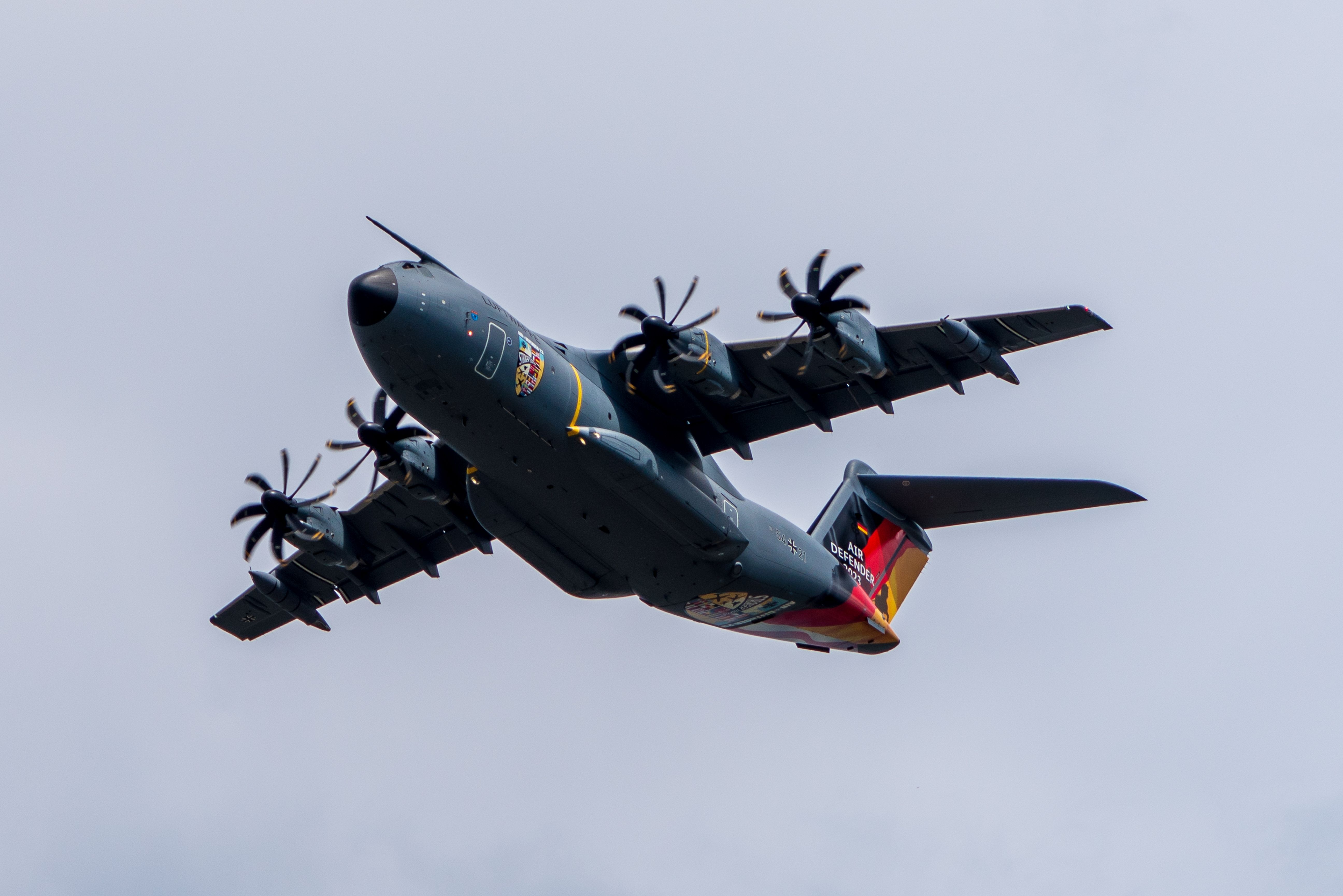
Related
Top 5: The Fastest Propeller Planes In The World
The majority of the fastest turboprops in the world are military aircraft.
Photo: Bychykhin Olexandr | Shutterstock
Despite only operating for three months in 2020, the first quarter of that year was a busy one for airBaltic’s Dash 8s. Indeed, Cirium’s data shows that the Latvian flag carrier scheduled 5,775 flights with the type during this period, offering 438,900 seats and 139,116,708 ASMs. Once again, Riga, Helsinki, Tallinn and Vilnius were among the top destinations, although there were other big hitters too, including:
- Riga-Stockholm Arlanda: 98 flights each way in January 2020.
- Riga-Kyiv Boryspil: 82 flights each way in January 2020.
- Riga-St Petersburg: 67 flights out and 66 flights back in February 2020.
A single Saab 340
In addition to its reasonably-sized contingents of Fokker 50s and De Havilland Canada Dash 8-Q400 aircraft, airBaltic also flew a single example of the Saab 340A. Originally delivered to Crossair in July 1984, this 33-seater joined the Latvian flag carrier second-hand in October 1995 as SE-LBP. After five months, the airline re-registered this aircraft as YL-BAG. It retained this identity until it left airBaltic.
The aircraft joined Finnish carrier Air Botnia in February 1999, and, as a passenger aircraft, its owners after this were situated in the likes of Sweden, Denmark, and Spain. Under the ownership of UK company Bridges Worldwide, the aircraft subsequently underwent a cargo conversion in 2006, and it has since gone on to fly commercial airfreight in this configuration for a variety of European operators.
The aircraft now flies for Estonian carrier Airest as ES-LSG, with ch-aviation’s data showing that it has done so since November 2015. Despite being about to hit the ripe age of 40 years old, having first flown on June 16th, 1984, the veteran twin-turboprop cargo plane remains active today, with data from Flightradar24 showing that it has most recently been flying between Bucharest and Chisinau.
airBaltic’s fleet today
Having now moved on from its turboprop and Boeing 737 family aircraft, airBaltic now operates a modern fleet consisting almost entirely of Airbus A220-300 narrowbody twinjets. Data from ch-aviation shows that the Latvian flag carrier flies 47 examples of the type (with an average age of just 3.9 years old), as well as leasing two A319s and one A320. Going forward, it has 33 more A220-300s on order.
Did you ever fly on one of airBaltic’s turboprop aircraft? If so, which kind, and where did it take you? Let us know your thoughts and experiences in the comments!
